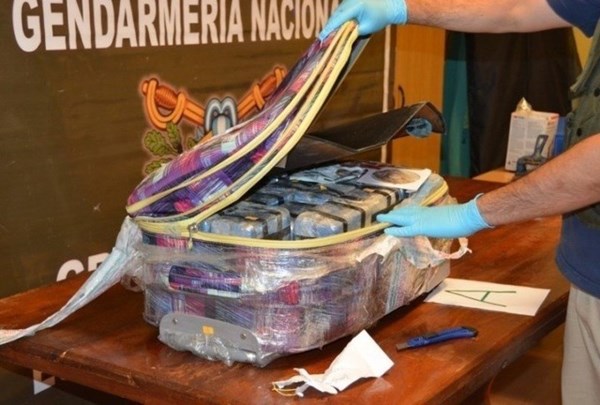Argentine police confirms authenticity of photo with Russian government plane being loaded with cocaine
The photographs with the hull number of the plane from the Russia Special Flight Detachment in Buenos Aires are authentic, the Argentine Gendarmerie said on Tuesday, February 27.
Earlier, official Russian Presidential Administration representative Elena Krylova said that the photographs are forgeries, and denied that the government airliner was involved in the “cocaine case”.
“Journalists have drawn conclusions on the basis of unreliable information – in this case photographs which can be fabricated easily with the help of modern technology,” she said, adding that there is “no clear hull number” in the photograph.
However, the Argentine Gendarmerie insists that the photographs are genuine.
“The published photographic material is official, and it is present in the investigation materials,” the Argentine law enforcement agency reported.
The Argentine Gendarmerie published photographs on Twitter from the criminal case to clamp down on the drug supply channel from Argentina to Russia. Among the images are photographs of an airliner being loaded with suitcases which the drug traffickers thought contained 400 kg of cocaine. The images show the plane’s hull number – 96023.
According to the website russianplanes.net, a plane with that hull number belongs to the Russia Special Flight Detachment, which specializes in transporting senior state officials. After the publication of RBC’s material, russianplanes.net was not accessible, but a saved version of the page can be found in Google’s cache. The resource showed that on December 6, 2017, an Il-96 plane with the hull number 96023 was in fact at the Buenos Aires airport. On December 7 it was in Cape Verde, after which it flew to Moscow.
Argentine Minister of State Security Patricia Bullrich said in a press conference on February 22 that a load of cocaine was sent “as diplomatic luggage on a Russian government plane” in December 2017. The Daily Telegraph pointed out that the cocaine was sent to Russia on the plane used by Russian Security Council Secretary Nikolai Patrushev, who was in Buenos Aires on a work visit.
According to Argentina, a member of the Russian diplomatic staff found suitcases with cocaine in one of the schoolrooms in the embassy on December 13, 2016. In order to track where the load went, the cocaine was replaced with flour, and the suitcases were equipped with GPS tracking devices and left where they were. Russian Foreign Ministry Spokesperson Maria Zakharova said that the cargo belonged to a member of the diplomatic mission’s technical staff, who was about to conclude his work contract at the embassy.
It was reported previously that the Argentine police had arrested five members of the Russian embassy staff because 400 kg of cocaine was discovered in their diplomatic post. The cocaine was packed into 12 suitcases which were meant to be sent to Russia.
